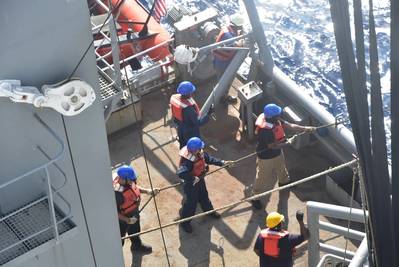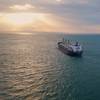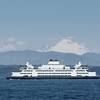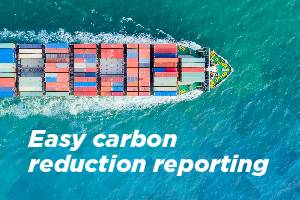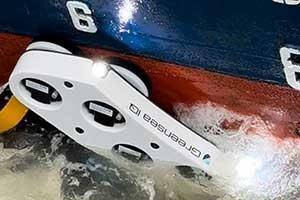No Shortage of Good Ideas to Address the Mariner Shortage
The U.S. mariner shortage continues to be a strategic national security concern for all maritime industry stakeholders. So what can the Maritime Administration (MARAD) and U.S. Coast Guard (USCG) do to address the problem?
Subcommittees on Readiness, and Seapower and Projection Forces on the “Posture and Readiness of the Mobility Enterprise.” Both Administrator Phillips and Gen. Van Ovost focused on the mariner shortage as a key readiness concern. Gen Van Ovost stated, “The U.S. maritime industry is confronting manpower shortages that create a national security risk. Merchant Mariner readiness requires continued assessment to ensure an adequately trained supply of merchant mariners to crew our surge fleet while minimizing impacts to commercial industry. USTRANSCOM and Military Sealift Command depend on the U.S.-flag merchant marine fleet, with the security benefits of American crews, to move sensitive defense materials. Unfortunately, due to a confluence of factors including complications from the COVID-19 pandemic, the workforce is shrinking.”
Both Administrator Phillips and Gen. Van Ovost pointed to the Maritime Workforce Working Group (MWWG) as a critical platform for developing answers to the shortage. MARAD was directed to form the MWWG by Congress under the National Defense Authorization Act for Fiscal Year 2024 (NDAA FY 2024). The MWWG consists of representatives from MARAD, USCG, USTRANSCOM, the Navy, maritime labor, and U.S.-flag vessel operators in domestic and international trades, among others. The MWWG has numerous responsibilities including taking stock of credentialed mariners; evaluating potential gaps required to maintain, mobilize, and operate the Ready Reserve Force; assessing the effectiveness of current recruitment efforts; assessing credentialing impediments; and making recommendations to close the mariner gap and improve mariner recruitment and retention. Ultimately, the MWWG will develop a report to Congress summarizing its findings and recommending actionable steps that Congress can take to address the mariner shortage. The working group had its kickoff meeting on March 20, 2024, with the Congressional report due December 22, 2024.
Notably, the MWWG is not the first effort of its kind. The National Defense Authorization Act for Fiscal Year 2017 also directed MARAD to form an MWWG and develop a similar report to Congress examining and assessing the size of the pool of U.S. mariners necessary to support the U.S. flag fleet in times of national emergency. As Administrator Phillips testified before the House Subcommittee on Coast Guard and Maritime Transportation last year, the 2017 MWWG report “determined that, at that time, concurrent operations of the commercially operated U.S.-flagged fleet and sustained military sealift operations would require 13,607 U.S. mariners with unlimited credentials….[however] the estimated pool of actively sailing mariners was comprised of 11,768 sealift qualified mariners—documenting a deficit of 1,839 mariners.” It does not appear that deficit has been effectively reduced in the intervening seven years. Hopefully the findings and recommendations of this newly-convened MWWG will lead to further actions by Congress, MARAD, and USCG to address this national security threat.
However, one Congressional action that clearly made a positive impact is the NDAA FY 2024’s three-year pilot program to streamline able-bodied seaman (AB) training time. The law reduced the time for AB endorsements as follows:
- AB-Unlimited overall service was reduced from 1,080 days to 540 days total service.
- AB-Limited overall service was reduced from 540 days to 360 total service.
- AB-Special overall service was reduced from 360 days to 180 days total service.
These service levels are more consistent with international standards. The legislation has already had an immediate impact, with the first round of Seafarers International Union mariners already receiving their AB endorsements under the reduced service requirements. Based on this success, and the continuing deficit of ABs serving aboard U.S.-flag vessels, it is clear that Congress should act to convert this pilot program to a permanent change.
Like the AB credentialing pilot program, there are a number of other promising proposals circulating around Washington, that should be supported by USCG and MARAD, and ultimately enacted by Congress to address the mariner shortage. One key area of focus, which was also highlighted in the MWWG’s 2017 report, is the need to ease the path for honorably discharged military veterans seeking to become mariners. Under the current law, a veteran attending a State Maritime Academy (SMA) with an existing bachelor’s degree is required to undertake the full load of classes to obtain a second bachelor’s degree from an SMA to serve as a licensed mariner. A change that has been proposed by the SMAs is to eliminate this requirement, and instead allow such veterans to focus only on USCG licensing requirements to cut their education requirements in half. This proposal appears to be a double victory – ensuring high-paying jobs for our veterans while addressing the critical mariner shortage.
There are many other proposals under consideration that are aimed at recruiting more students to our state maritime academies, for example, including U.S. mariners in the Public Service Loan Forgiveness (PSLF) program. This proposal would recognize the inherent, critical public role our U.S. mariners play in supporting our collective national defense and economic security. It would also incentivize retention by ensuring that mariners serve for the full 120-month period of public service required to meet PSLF requirements. To complement this proposal, an additional concept proposes a temporary tax holiday to encourage recruitment and retention. This proposal would place U.S. mariners on a more even playing field – at least temporarily – with foreign mariners who are not required to pay any form of federal income tax.
The bottom line is that there are numerous ideas being discussed in the hallways of Congress, USCG, and MARAD that could substantially improve U.S. mariner recruitment and retention. The recently-convened MWWG will inevitably add to the pool of great ideas to address this critical national security concern. The key, however, remains action by the federal government to turn these ideas into reality.




